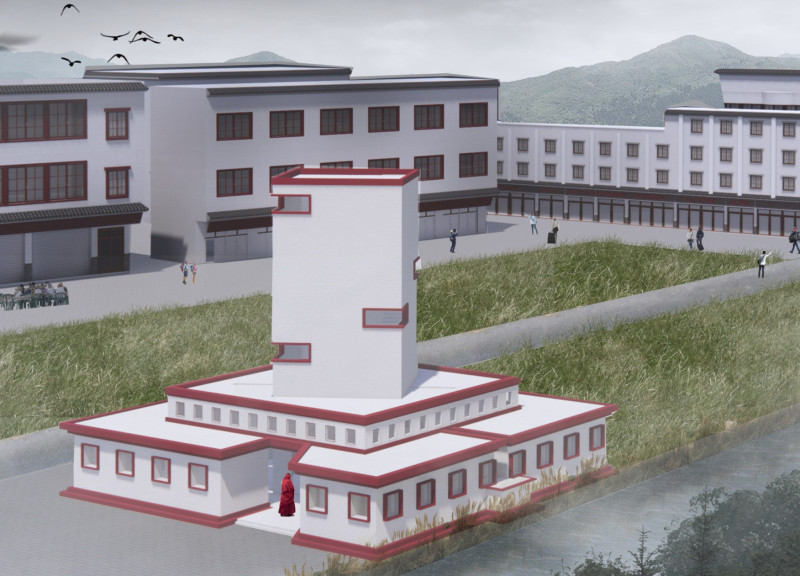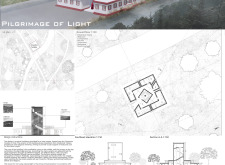5 key facts about this project
Pilgrimage of Light is a residential design located near the Chuanzhu Temple in Tibet, created as a home for a lama couple. The overall design concept brings together traditional Tibetan elements with modern touches, aiming to create a peaceful environment that supports meditation and spiritual practice. The residence seeks to provide comfort while fostering a strong connection to the surrounding natural landscape.
Meditation Space
At the core of the design lies a meditation room, purposefully placed in the center of the home. This space serves as a sanctuary for spiritual activities and represents the journey of pilgrimage, inviting both physical and inner exploration. The layout encourages movement upward through the building, allowing individuals to experience a sense of elevation and reflection as they ascend.
Visual Engagement
As occupants transition between the various levels, they encounter distinct visual perspectives that strengthen their connection to the environment. The bottom window connects to the lively energy of daily life, highlighting the dynamics of the world outside. In comparison, the middle window offers a serene view of the nearby Chuanzhu Mountain, fostering a calming atmosphere for introspection. At the highest level, the view of the Chuanzhu Temple reinforces the spiritual significance of the site.
Light Management
A key feature of the design is the conscious choice to limit natural light in the meditation areas. This decision aligns with the spiritual practices of the lamas, creating a consistent and controlled setting. Without the distractions that can come with changing light, the space supports deep meditation and focused reflection, allowing individuals to engage fully in their spiritual journey.
Material Influences
While specific materials are not highlighted in the project details, the design draws from the principles of traditional Tibetan architecture. It is likely that local stone, wood, and earth materials will be used, reflecting the region’s cultural heritage and environmental context. Such choices enhance the relationship between the building and its surroundings, blending the spiritual and natural worlds.
The design features a well-thought-out progression through space, encouraging movement and contemplative reflection. Each element is designed to enhance the meditative experience while creating a strong link between the inner sanctuary and the outer landscape.



















































